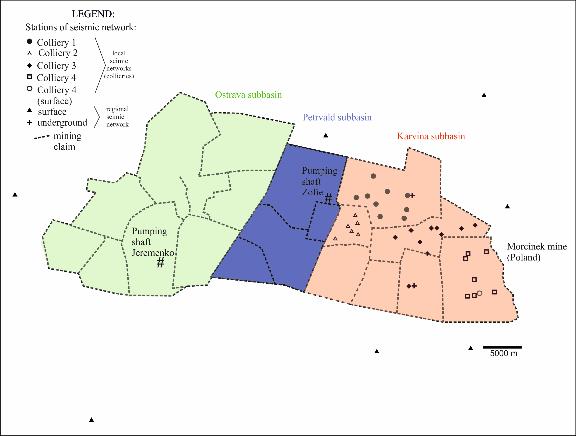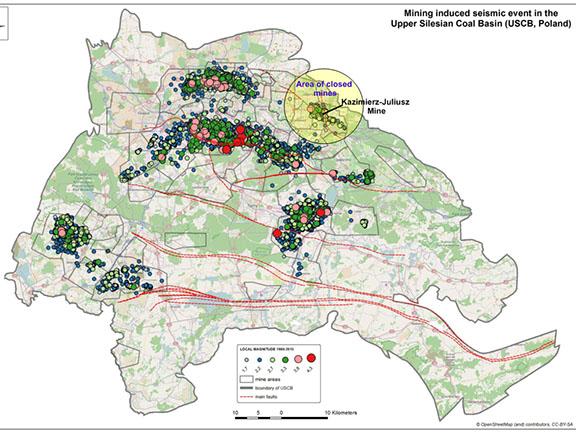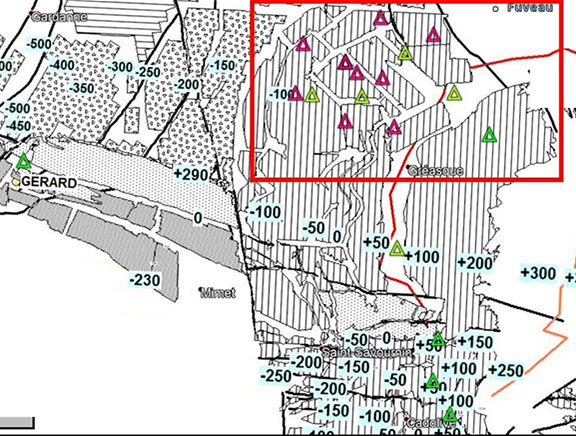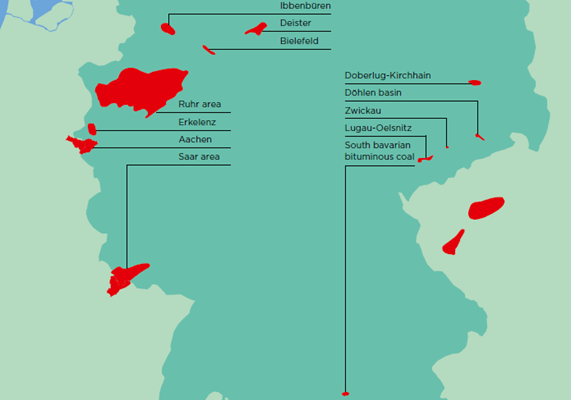
Czech Republic
Part of the Czech Upper Silesian Coal Basin (USCB) in the area of interest for the PostMInQuake project can be divided according to natural conditions on three main sub-basins: (i) Ostrava sub-basin, (II) Petrvald sub-basin and (iii) Karvina sub-basin. Seismological monitoring was created in area of Karvina sub-basin due to high rockburst risk in 1980s as a part of rockburst prevention system.

Poland
The Polish part of the Upper Silesian Coal Basin (USCB) in the area of interest for the PostMinQuake project we can divide for area with still working mines and areas with closed mines (see Fig. 5). The north- eastern part of the USCB is the area of already closed mines. The last of them – Kazimierz Juliusz – was closed in 2016. Earlier, due to the safety reasons the water table was lowered to the approximate depth 700 m. Currently, the process of flooding the mine is in progress.

France
In France, coal mining activity in Provence basin has left many underground voids at different depths that causes land subsidence or collapses in areas of high population density. The coal basin of Provence is located about 20 km NNE of Marseille (Bouches-du-Rhône) and covers ~60 km². The industrial exploitation lasts from the first half of the 19th century to 2003.

Germany
Germany has been one of the largest coal producers in Europe for many years. It had many coal mines located in different regions. The most important deposits are located in the state of North Rhine-Westphalia (NRW) in the Ruhr Area and in Tecklenburger Land (Ibbenbüren’s hard coal area) and the state of Saarland. Regarding to the objectives of the project, research activity will focus on Hamm (east of the Ruhr area) and Ibbenbüren.

